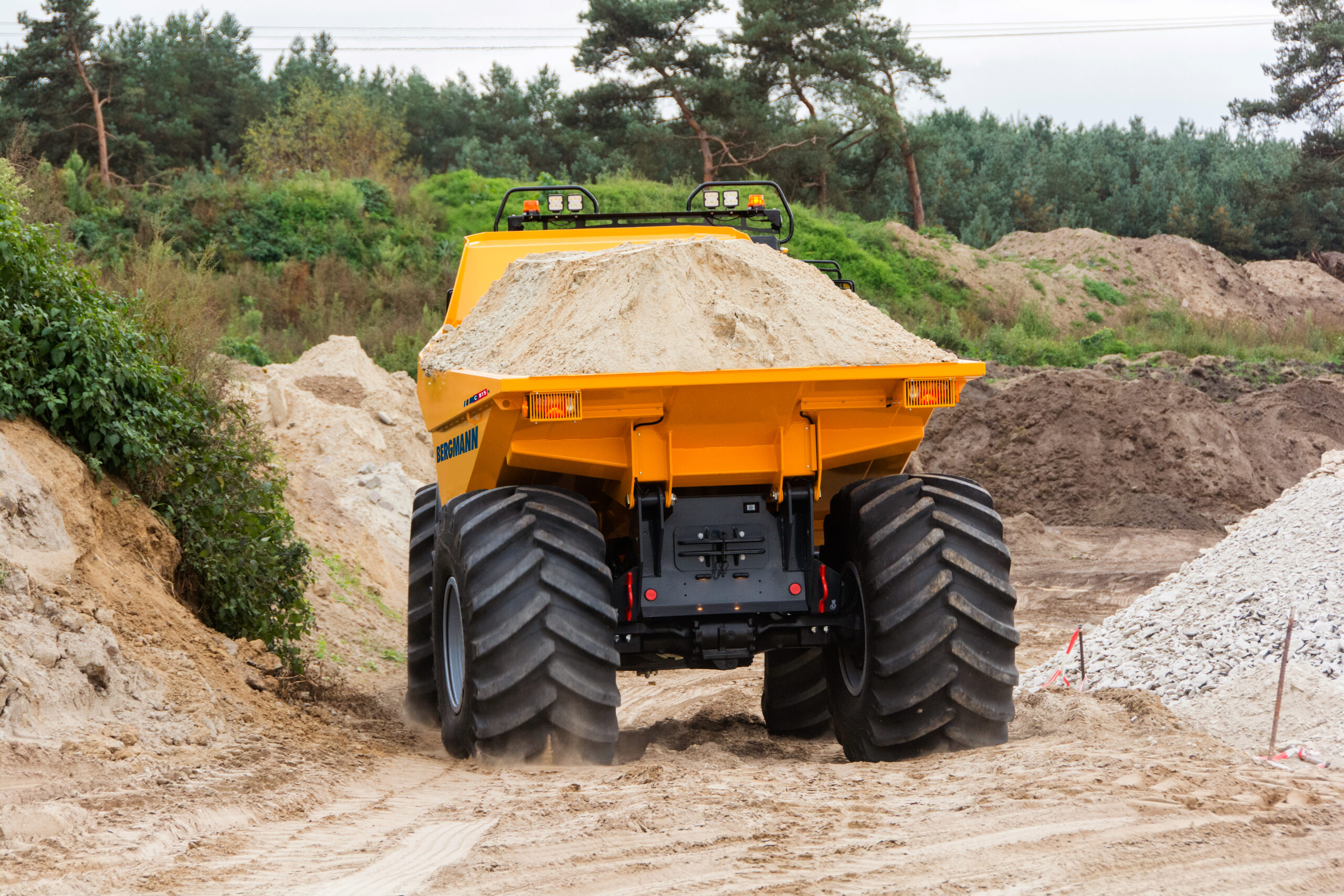Engineered for Soft Ground: Bergmann’s Low Ground Pressure and Flotation Tire Systems
When operating in low-load-bearing environments like wetlands, turf-sensitive sites, or saturated soils, equipment must do more than haul. It must preserve the ground, minimize risk, and maintain productivity. That’s where Bergmann dumpers provide a clear performance advantage.
What Is Low Ground Pressure and Why Does It Matter?
Low Ground Pressure (LGP) refers to how effectively a machine spreads its weight across the terrain. Bergmann designs its machines to exert less pressure on the ground, enabling:
-
Reliable operation in soft or unstable terrain
-
Reduced soil compaction and ground disturbance
-
Easier environmental compliance and permitting
-
Lower remediation costs after project completion
LGP is not an optional feature. It is a core engineering principle applied across our dumper lineup.
What Makes Bergmann Equipment Effective in Soft Ground Conditions?
To keep your equipment moving where others sink, Bergmann integrates these core design features:
-
High-flotation tires with wide tread profiles that maximize surface contact
-
Optimized low tire pressure for expanded footprint and better float
-
Extended wheelbases that distribute weight more evenly
-
Optional track systems available for extremely low-traction sites
These design elements help prevent rutting and stuck equipment, which directly boosts uptime and operational efficiency.
How Do Flotation Tires Support Ground Protection?
Flotation tires are designed to “float” over soft ground rather than dig into it. Their advantages include:
-
Reduced rutting and turf damage
-
Improved traction on muddy, snowy, or loose surfaces
-
Smoother and more controlled travel over unstable terrain
These tires are ideal for applications in:
-
Landfill sites and marsh zones
-
Agricultural fields and parklands
-
Forestry access and snow-covered trails
Are Flotation Tires Standard on Bergmann Machines?
Yes. Most Bergmann dumpers include flotation tires as standard equipment. These systems are not retrofitted but designed from the outset to align with chassis geometry, payload capacity, and terrain adaptability. This ensures consistent performance without the compromises of aftermarket upgrades.
How Do I Choose the Right Setup for My Ground Conditions?
To determine the best configuration for your needs, consider the following:
-
What type of terrain will you encounter? (Muddy, turf, sand, snow?)
-
Is environmental protection or site restoration a concern?
-
What is the typical payload per haul?
-
Do you expect variable weather or changing surface conditions?
If any of these factors apply, LGP performance and flotation tires are likely essential to your success. This compact dumper selection guide offers valuable insights for comparing models and evaluating job site requirements.
What’s the Real Benefit of LGP and Flotation Tire Technology?
The true value lies in practical outcomes. You get:
-
Less downtime caused by stuck machines
-
Better protection of environmentally sensitive areas
-
Continued access to the jobsite regardless of conditions
-
Greater project efficiency and reduced cost per ton moved
You’re not just outfitting a machine. You’re investing in reliable, terrain-ready performance.
Ready to Equip Your Fleet for Soft Terrain?
Our team can help you identify the best Bergmann dumper and tire configuration for your site conditions, performance requirements, and environmental concerns.
This article was adapted from an original post by Ascendum Machinery, an authorized Bergmann dealer.

